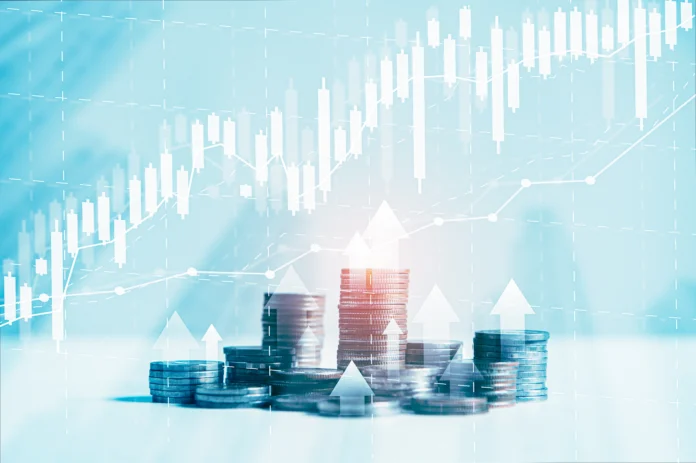By Chris Kuehl, managing director, Armada Corporate Intelligence
Given all the data, where does the economy stand? It is a bit of a broken record, but the old phrase for economists still is true: ‟It depends.” What economists know for certain is that some of the drivers of last year’s economy have faded and one has all but vanished. At the start of 2023, there were a lot of references to the supply chain collapse and how businesses were trying to adjust.
Today, inventory-to-sales ratios have returned to normal levels (although not in all sectors or completely). Some major supply chain bottlenecks have cleared (Panama Canal), but others are worsening (Red Sea and South China Sea). Manufacturing was booming as companies rushed to beef up their inventory, but now they are waiting to see that inventory diminish before they start seeing new orders again. Additionally, there are unanswered questions regarding the interest rate environment, labor situation, supply chain and, of course, the political environment.
Consumer Spending
There is a three-legged stool as far as the economy is concerned – still stable but not quite as resilient as the four-legged variety. The dominant factor is consumer spending, but over the past couple of years, it has been apparent that most of that spending originated in the upper-third of income earners (those making over $100,000). The bottom-third earners (under $50,000) essentially have retreated, and it’s estimated that 85% now are living paycheck to paycheck and buying only necessities. That leaves all eyes on the middle-third earners ($50,000-$100,000), who still are spending on recreation and entertainment while other non-essentials are being rejected.
The most important factor for middle-level consumers is job security. In the last few months, there has been a marked reduction in job offers across a variety of sectors.
Government Spending
Government spending has been an important leg but is rooted in infrastructure spending, and lately that has slowed – primarily due to election jitters. The bulk of the money allocated for infrastructure originally was aimed at energy issues and reacting to climate change. There was a lot of money set aside for solar and wind, promoting EVs and conservation. These were never popular provisions within the GOP, and if there is a shift in congressional leadership, that money may be redirected to more traditional activities, such as roads, bridges and construction. There is very little of the government cash that was allocated during the pandemic left, and there doesn’t seem to be enthusiasm for more big spending sprees. On the other hand, there is little appetite for any spending cuts either.
Non-Residential Spending
The final motivator is non-residential construction, and there continues to be strong demand for anything related to logistics or high-tech. The demand for data-center activity has been estimated at over 200 terawatt-hours per year, which is a 160% increase in power demand. While there has been a marked reduction in demand for office buildings and retail outlets, at the top of the list has been anything related to logistics and supply chain.
The shift in the way that consumers shop has created a huge demand for warehousing, and that demand has been further amplified by the need for manufacturers and others to hold more inventory. The Just-In-Time (JIT) system is not what it once was as there have been too many inhibitions, and that has shifted emphasis toward holding more inventory.
Another fast-growing segment of non-residential activity has been medical, with a trend toward decentralization. Medical facilities are springing up in suburbs at a rapid rate. The fastest growth still is in manufacturing, as entities have adopted technology and robotics requiring alteration of their physical facility.
Total residential construction activity still is trending higher than expected, but there has been a shift in demand from the multi-family unit to more single-family. Overall, manufacturing demand is subject to growth drivers in a wide variety of industries. The industry remains complex because what is good for one sector may not reflect demand for another sector’s output.
What does this mean for manufacturing? Of the three legs that remain, it can be argued that manufacturing is tied to consumer demand, but in most cases, that connection is indirect. The majority of manufacturers are small- to medium-sized suppliers to some larger entity that assembles all those disparate parts. They are distant from actual consumer wants and needs and depend on the companies they supply to figure that out. That leaves most without a lot of control over demand while also dealing with “customers” that constantly demand lower prices. It is a tough world!
Inflation
Meanwhile – back at the Federal Reserve – at the same time the European Central Bank (ECB) has started to hedge its bets on rate cuts, there have been more signals of a Fed cut… and maybe as soon as September (as opposed to the end of the year). The points made by Fed officials include an observation that inflation pressures now are close to their target range, data shows the labor market softening a little and there is a general acknowledgment that those in the bottom third of income earners are struggling to make it from one month to the next.
It is important to remember that an interest rate adjustment (up or down) takes several months to start affecting the economy. Many other factors affect business expansion, and the triggers that encourage the reduction of rates are the ones that inhibit those expansion plans (slowing economy, higher rates of joblessness leading to reduced consumer activity, etc.).
Trade Policy and Tariffs
The US wants to revitalize its industrial core, and it wants to find a way to be more competitive in a variety of modern technologies. This has necessitated a dramatic shift in overall trade policy and intent. The push for most of the past 50 years has been to emphasize the consumer so the US would have access to quality goods at a cheap price.
China set export records last month despite the fact its economy stuttered in the second quarter – falling to 4.7% growth. Currently, it manufactures 35% of all US apparel and accessories. Over the last few years, the Chinese have been exporting a great deal of high-tech and high-value goods to the US – everything from solar arrays and EVs to farm machinery, robots and electronics. The US now seeks to blunt this surge in export activity, and that is far easier said than done. The fact is that consumers always will be motivated to buy at the cheapest price. Sellers always will be motivated to find ways to serve that market.
With that, tariffs are taxes imposed on an export from another nation. The idea is simply to make that good more expensive than a local option. The consumer is the one who will pay that tax, and the assumption is the consumer will switch to buying an alternative product rather than pay the higher price. Unfortunately, for those trying to limit these imports, there are many ways around these tariffs. The simplest is to manufacture a product somewhere other than China. The strategy is simple – make most of the item in China, ship it to another nation that is not subject to tariffs and then send it to the US.
The bottom line is that tariffs and regulations fail far more often than they succeed. It means investing in what the US industry needs – manpower, infrastructure, innovation, research and development. It also means understanding priorities. Which is more important – accelerating the adoption of the EV in the US by allowing cheaper vehicles to be sold here or thwarting China in some limited way?
In conclusion, there is little threat of a recession but it seems a slowdown likely is possible (some would refer to this as a soft landing). Inflation still is a threat – primarily from wage growth in the service sector, but otherwise the rate of inflation is falling. The Fed will cut rates by the end of the year, but the question is whether that means September or December – and will this bring rates down below 5.0%?
Chris Kuehl is managing director of Armada Corporate Intelligence. Armada executives function as trusted strategic advisers to business executives, merging fundamental roots in corporate intelligence gathering, economic forecasting and strategy development. Armada focuses on the market forces bearing down on organizations.
More information: www.armada-intel.com





